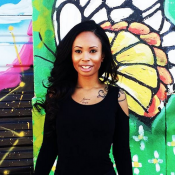I am a proudly community educated artist, someone without any formal institutional backing. I didn’t go to art school, I didn’t finish university and left with a 4.00 and way too much debt. While I applaud everyone who is able to find their way in these spaces or who are able to afford the cost, I know it wasn’t the place for me. I wanted to be nurtured in innovation, in creativity, to find my own unique voice. When I left I remained so hungry for learning, for the kind of intricate and localized wisdom that can best be found in the hearts of a slew of community based artists and creative visionaries. In the last decade, regardless of the climate, community artists have produced and our community members have shown up. From AnitAfrika theatre to the loft space at Unit 2; the live and diverse hip hop shows hosted 88 Days to the fisting Kermit performance art of Jess Dobkin – I have been fed most notably in this city not by Princess Of Wales Theatre, but by a slew of ‘hood famous’ artists unlocking entire universes in their rich storytelling that is not often appreciated in hetero, white institutional theatre spaces. And I am so grateful for the generosity of many of these and other artists who have with a lot of dedication sought to raise artists in community who would not normally have access to institutionalized theatre programs.
Community art has always been the place where we as artists refuse to specialize. We embrace that our art practice is present in our side hustles and our main gigs. Like Catherine Hernandez, we might be caring for babies as our day job before slipping pasties on for a night of burlesque and fan dancing that would set your soul ablaze
Growing up in a single parent immigrant household, the arts are not necessarily seen as an avenue that will provide the best possible future for your children. An absence of Queer & Trans* narratives in most media outlets limits all audiences from accessing the brilliant work of our many directors, producers and actors. I name this because it is true there are reasons why we are often harder to look for. Nonetheless, instead of hoping for representation from others, community art shows up in subways and street corner and remains the wellspring that the ‘mainstream’ drinks from.
I am grateful for the legacy of Desh Pardesh and Punam Khosla who deepened my context of the contributions of women of colour creators in Toronto, Lisa Valencia-Svensson who has artistically and politically both contributed to a public performance art in the streets of Pride year after year, has also been an archivist, keeping these costumes and news clippings that historicize the critiques of Queer & Trans* People of Colour and has continued to share that wisdom, most recently at this year’s Rhubarb. I think about D’bi Young who has incubated and influenced many of the artists of my generation and beyond, from her work with Da Kink to her artist residencies that have nurtured Lishai Peel, Amanda Parris, and myself among so many others. Community is built in these spaces, as a part of Buddies YCU, I was able to work along side such phenomenal artists as Cole Alvis and Tawiah Ben-Eben M’Carthy.
For many of us Buddies was our first stage, a place where we invited our first audience, and a place where we made art and made community. As a wheelchair accessible space, it meant that we have been able to roll deep both literally and figuratively. And as Gein, Jade & I prepare for another round of Insatiable Sisters, we remain grateful for the legacy that we have inherited and are committed to creating more and more space for our village to show up.
– – – – – – – – – –
Image of Kim Katrin Milan by Tanja-Tiziana

